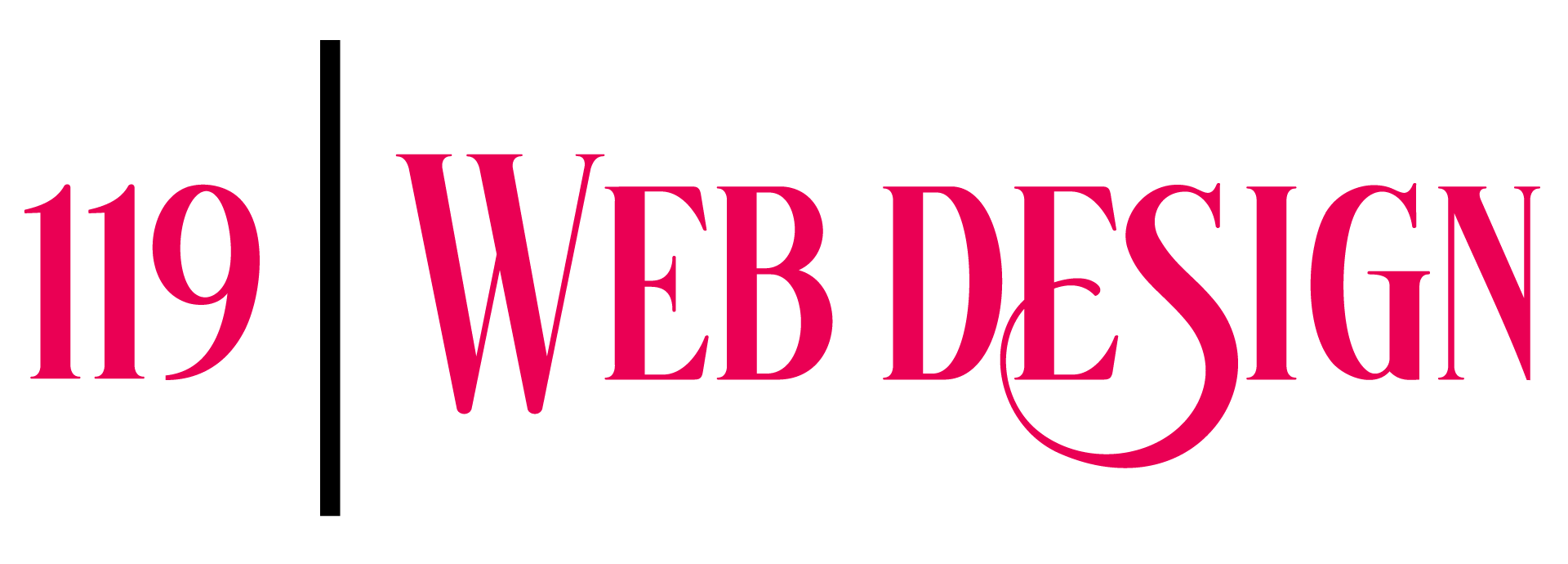Typography plays a pivotal role in shaping how users engage with and perceive digital content, making it a cornerstone of effective web design. Among the many facets of web design, optimizing website typography for maximum readability stands out as a critical factor influencing user experience. Whether it’s ensuring text is easily legible or aligning font choices with brand identity, the right approach to typography can significantly impact how information is absorbed and retained. This article delves into the nuances of web typography, exploring everything from selecting the best website fonts for readability to implementing web typography best practices. By examining the relationship between typography and readability, we’ll uncover insights into how to enhance your website’s visual appeal and ensure your content is accessible to the widest possible audience. From determining the ideal font size for website readability to evaluating typography styles, this comprehensive guide offers actionable strategies for creating a cohesive and effective typography strategy.
Key Takeaways
– Optimal Font Sizes Vary by Device: Mobile screens require 12-16pt, tablets 15-19pt, and desktops 16-20pt for maximum readability.
– Best Font Categories: Serif fonts (Times New Roman, Georgia) and sans-serif fonts (Helvetica, Arial) are top choices for screen readability.
– Font Features for Readability: Prioritize high contrast, adequate spacing, appropriate font size, and avoid serif fonts for screens unless using Georgia.
– Top Recommended Fonts: Use Helvetica for sans-serif, Georgia for serif, and consider Arial, Calibri, or Verdana for alternative options.
– Font Selection Tips: Always test fonts across devices, use web fonts for compatibility, and follow accessibility guidelines like WCAG for text size and contrast.
– Testing Tools: Utilize tools like “What Font” or MyFonts to evaluate font performance on different screens.
– 14px Font Size Considerations: Stick to 14px for body text, use relative sizing, and ensure accessibility with font sizes meeting WCAG standards.

Most Readable Font for Websites
The most readable font for websites is typically a clean, modern sans-serif typeface. These fonts are known for their simplicity and legibility, making them ideal for digital screens. Examples of popular sans-serif fonts include Arial, Helvetica, and Roboto (from Google Fonts).
Key considerations for readability include:
- Clarity: Sans-serif fonts tend to be clearer and less cluttered compared to serif fonts.
- Size: Choose a font size that scales well on different screen sizes, especially for mobile devices.
- Spacing: Proper tracking and leading ensure that text is neither too cramped nor too spaced out.
- Serif vs. Sans-Serif: While serif fonts are traditionally preferred for print, sans-serif fonts are generally better for digital screens due to their ease of reading.
- Web Optimization: Utilize web fonts like Google Fonts or Typekit to ensure your chosen font is optimized for screen display and available in various weights and styles.
- Consistency: Stick to a consistent font throughout your site for better readability and brand consistency.
- Accessibility: Ensure your font supports text resizing and has sufficient contrast against the background for users with visual impairments.
Popular brands and websites that use effective fonts include Google (Roboto), Apple (San Francisco), and Microsoft (Segoe UI), demonstrating the effectiveness of these choices for readability and user experience.
How to Make Text Readable on a Website
To enhance readability, follow these steps:
- Choose the Right Font : Opt for sans-serif fonts like Arial or Tahoma for their clarity on screens.
- Adjust Font Size : Increase the font size beyond the default to improve legibility.
- Ensure Proper Contrast : Use lighter text on darker backgrounds and vice versa, especially for low-light conditions.
- Enhance White Space : Add space around text to prevent it from appearing cramped.
- Optimize Line Spacing : Use adequate line spacing to reduce eye strain.
- Utilize Magnification Tools : Offer magnifying glasses or zoom features for users needing assistance.
- Dynamic Text Adjustment : Implement tools that adjust text color based on background changes.
- Prevent Text Overlap : Ensure text does not overlay images or other elements.
- Handle Long Text Blocks : Break down lengthy content into digestible sections or use scrollable areas.
- Test and Iterate : Continuously test readability and gather user feedback for improvements.
By addressing these factors, you can ensure your website’s text is easily readable and accessible to all users.

How Typography Improves Readability in Website Design
Typography is a cornerstone of web design, playing a vital role in enhancing readability and overall user experience. Here’s how typography contributes to better readability:
- Font Choice: Selecting the right fonts is the first step. Fonts like Arial, Helvetica, and Georgia are widely recommended for their clarity and legibility on screens.
- Font Size and Spacing: Ensuring text is appropriately sized for screen viewing is crucial. Larger text enhances readability, while proper spacing between letters and words prevents clutter.
- Line Height: Adjusting line height (typically around 1.5 times the font size) ensures text isn’t cramped, facilitating smoother reading.
- Consistent Design Approach: Using the same font family throughout the site maintains visual cohesion and aids navigation, preventing confusion from abrupt font changes.
- Contrast and Color: High-contrast text colors, such as white on dark backgrounds, enhance readability, ensuring text doesn’t get lost against busy backgrounds.
- Accessibility Considerations: Choosing fonts that cater to users with visual impairments, like sans-serif fonts, and minimizing glare under various lighting conditions is essential.
- Leading and Decoration: Proper leading (space between lines) organizes content, while minimal text decoration avoids distractions, keeping focus on the content itself.
By thoughtfully applying these principles, typography not only elevates readability but also enriches the overall user experience, ensuring content is easily digestible and visually appealing.

Best Font Size for Website Readability
The optimal font size for website readability varies depending on the device and screen size:
- Mobile Screens: 12-16pt font size is generally recommended for better readability on smaller screens.
- Tablets: Increase the font size slightly to 15-19pt to accommodate the larger screen without compromising readability.
- Desktop Computers: Opt for a larger font size of 16-20pt to utilize the available screen space effectively.
These recommendations aim to strike a balance between legibility and visual comfort, ensuring that text remains easy to read while maintaining a clean layout.
The Best Website Readable Font
Choosing the right font for your website is crucial for readability and overall user experience. While there isn’t a single “best” font, several options stand out for their ease of reading on screens.
Categories of Readable Fonts
- Serif Fonts: These fonts have small lines at the edges of letters, which can make text more visually appealing and easier to read on screens. Examples include Times New Roman and Georgia.
- Sans-Serif Fonts: Clean and modern fonts without the serif details, such as Helvetica and Arial, are highly readable on digital displays.
- Other Popular Choices: Fonts like Calibri and Verdana are also excellent for web use due to their legibility and screen-friendliness.
Key Features for Readability
- Contrast: High contrast between the text and background ensures the text is easily visible.
- Spacing: Adequate line height and letter spacing (leading) allows the eyes to move smoothly across the page without strain.
- Font Size: Text should be large enough to avoid being too small on mobile devices or low-resolution screens.
- Serifs for Print vs. Screen: While serif fonts are traditional for print, sans-serif fonts tend to perform better on screens due to their simplicity and clarity.
Recommended Fonts
- Best Sans-Serif Font: Helvetica is widely regarded as one of the most versatile and readable fonts available today.
- Best Serif Font: Georgia is a great choice for those who prefer serif fonts, offering excellent readability on screens.
- Alternative Options: Arial, Calibri, and Verdana are also excellent choices depending on your design needs.
Guidelines for Choosing Fonts
- Test on Different Screens: Ensure the font looks good on various screen resolutions and devices.
- Consider Legibility Studies: Some studies suggest that certain fonts are more readable than others, particularly on mobile devices.
- Use Web Fonts: Utilize web-safe fonts or services like Google Fonts to ensure compatibility across different browsers and devices.
Tools for Testing Fonts
- Browser Extensions: Extensions like “What Font” can help identify fonts used on any website.
- Online Font Comparators: Tools like MyFonts or Canva allow you to compare fonts side by side and see how they render on different devices.
By considering these factors and testing your chosen fonts, you can select a font that enhances readability while aligning with your website’s design goals.

Is 14px Too Small for Web Design?
The choice of font size plays a crucial role in web design, impacting readability, user experience, and accessibility. While 14px may seem sufficient, its effectiveness depends on several factors:
- Pixel Count Consideration: Text legibility decreases as font size diminishes. On average screens, 14px can be challenging for certain audiences, particularly those with visual impairments or reading disabilities.
- Resolution Independence: Font sizes should ideally be relative (e.g., 1rem = 16px) rather than fixed, as fixed sizes can appear too small on higher-resolution screens or too large on lower-resolution devices.
- Accessibility Standards: According to WCAG guidelines, text should be at least 18px for body text to meet contrast and readability requirements. Smaller sizes may risk compliance with these standards.
Best Practices for Font Sizes
- Choose a Base Size: Start with a comfortable body text size, typically around 16px or 1.125rem, which is approximately 20px. This provides a solid foundation for typography hierarchy.
- Cater to Device Diversity: Ensure your design accounts for various screen sizes. Smaller screens may benefit from slightly larger text sizes, while larger screens can handle smaller fonts without losing readability.
- Use Relative Units: Utilize em or rem units for fluid typography that adapts to different screen sizes. This avoids the pitfalls of fixed pixel sizes.
- Ensure Proper Spacing: Adequate leading (line height) is essential. A line height of 1.2 to 1.6 ensures text remains readable and visually appealing.
Examples and Recommendations
- Body Text: Aim for 14px to 16px for optimal comfort and readability.
- Smaller Text Elements: Use 12px to 14px for headings, buttons, or navigation links, ensuring they remain legible against backgrounds.
- Very Small Text: Reserve 10px or less for decorative elements or non-critical information, ensuring it remains visible against contrasting backgrounds.
Conclusion
While 14px can work effectively in specific contexts, prioritizing relative sizing and accessibility standards often yields better results. Testing your design across different devices and screen sizes is crucial to ensuring text remains legible and visually appealing. By focusing on user-centered design principles, you can strike the perfect balance between aesthetics and functionality.




0 Comments